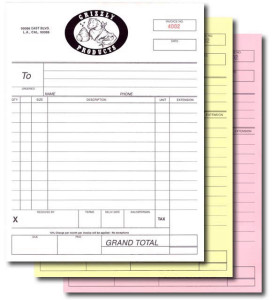Do I really need to see a proof?
 In today’s competitive business environment where everyone can launch a website and be in business in a matter of minutes; sometimes the only difference between a legitimate business and a fly-by-night operation is the details in accuracy or flaws of the website or printed material of each company.
In today’s competitive business environment where everyone can launch a website and be in business in a matter of minutes; sometimes the only difference between a legitimate business and a fly-by-night operation is the details in accuracy or flaws of the website or printed material of each company.
Have you ever read an article and came across a spelling or a grammatical error and thought, how did this obvious mistake not get caught by the author? Didn’t anyone proofread this? Did you at that instance lose interest in the article or the writer’s credibility? Most readers do!
Every new client who comes across your marketing material regardless of whether it being digital or print will look at your business and services with a skeptic’s eye. They read your printed and published material or browse through your website not only to be informed but to see if they can trust your business. Give a skeptic enough time, he/she will find mistakes in everything. While making a mistake is inevitable and is simply part of being human avoiding it is not that hard and frankly with all the tools at our disposal, making silly mistakes is inexcusable. Most readers are not looking for every article or prom
otional material to be Shakespearean, but they rightfully expect an accurate representation of the company and its product or services on everything that you put your business name on.
So, therein lies the importance of writing accurate business, marketing and promotional material and reflecting this accurately everywhere your potential client comes in contact with your company information.
Before signing off on anything that will be seen by your potential clients, make sure to ask for the right proof. A proof is a copy of a document, article, inner office form or an advertisement material that is being printed or published. Proofs are sent to editors for reviewing the content and layout of the project for accuracy before it is sent to production. This will give the editor an opportunity to catch errors or make final adjustments to the product.
Proof types vary from company to company as well as project to project and depend on what is being produced.
Printing one color material (invoices, purchase orders, service tickets, envelopes, employee handbooks & such)
If you are printing material such as a business invoices, NCR forms, purchase orders or service tickets

that are printed in one color, you will not need to worry about color corrections. The purpose of the proofing is the review the content of the printed material, the tables and the basic design and structure of the product. Most printing companies offer a free proof in a digital format (usually PDF or JPEG) or a simple one-color laser printout.
Producing a full color material (brochures, postcards, web pages, catalogs)
Proofs of full color products such as brochures or postcards, need to show accurate colors of images, backgrounds, text, product, plus the accuracy of the content. If a product contains a full-color logo, the color accuracy of the logo is essential, especially for well-known brands.
The three color proofing methods available are:
- PDF proof: These are high resolution PDF images that accurately represent the final product. As a proofreader, you must keep in mind that what is seen on a back lid monitor will look different on paper. These proofs are ideal for products that do not need crucial color match such as web pages or general printed material. These proofs are ideal where there is limited time for proofing and a tight timeline for production.
- Digital proof: Digital proofs are produced on a full color printer, usually an ink jet or a laser printer that has been calibrated to be as close to the final press run (usually within 10% accuracy). Printers who use digital press are able to print out only a single sheet for a proof. These printers will then match the color of the rest of the production to the approved proof. Since the per-piece cost of a full color digital product is higher than a traditional full color product, these production runs are typically shorter.
- Press proof: Press proofs are the most expensive type of proof and produced from the same plate and press that would eventually run the final job. A press proof is only requested after the printed piece has been reviewed thoroughly and every part of the content, images and layout is finalized and approved for printing. Once the project is approved and right before the final project is sent to the press, a final press proof is ordered to check the color accuracy of the final product. Since the set up cost of any full color printed project are the same regardless of the run size, the cost of press proofs are usually significant and only requested when the color accuracy is a must.
Considering that everything written, produced or published on your company’s behalf is a representation of your company and your team. It’s essential to scrutinize every piece and every product. The time and effort spent in making sure that your information is accurate, useful and to the point is what will eventually differentiate you from the competition.
Tags: Advice, Business Forms, Design, form elements, Proof, TutorialCategorised in: Printer's Advice
This post was written by Progressive Printing Team





